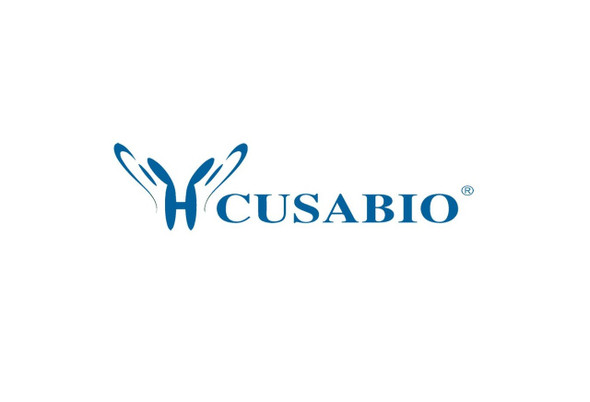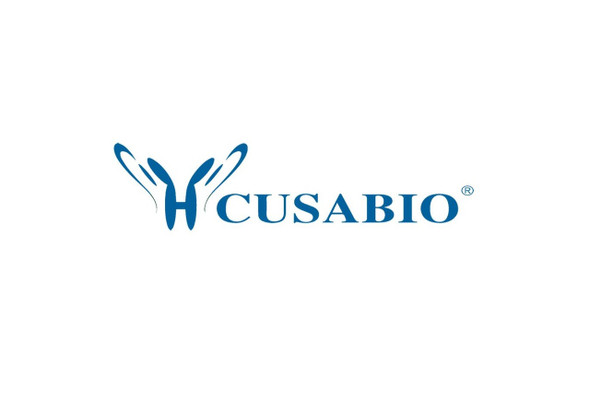Cusabio Human Recombinants
Recombinant Human Type-1 angiotensin II receptor-associated protein (AGTRAP) | CSB-CF744194HU
- SKU:
- CSB-CF744194HU
- Availability:
- 3 - 7 Working Days
Description
Recombinant Human Type-1 angiotensin II receptor-associated protein (AGTRAP) | CSB-CF744194HU | Cusabio
Alternative Name(s): AT1 receptor-associated protein ATRAP
Gene Names: AGTRAP
Research Areas: Cardiovascular
Organism: Homo sapiens (Human)
AA Sequence: MELPAVNLKVILLGHWLLTTWGCIVFSGSYAWANFTILALGVWAVAQRDSIDAISMFLGGLLATIFLDIVHISIFYPRVSLTDTGRFGVGMAILSLLLKPLSCCFVYHMYRERGGELLVHTGFLGSSQDRSAYQTIDSAEAPADPFAVPEGRSQDARGY
Source: in vitro E.coli expression system
Tag Info: N-terminal 10xHis-SUMO-tagged and C-terminal Myc-tagged
Expression Region: 1-159aa
Sequence Info: Full Length
MW: 37.4 kDa
Purity: Greater than 85% as determined by SDS-PAGE.
Relevance: Appears to be a negative regulator of type-1 angiotensin II receptor-mediated signaling by regulating receptor internalisation as well as mechanism of receptor desensitization such as phosphorylation. Induces also a decrease in cell proliferation and angiotensin II-stimulated transcriptional activity.
Reference: "The angiotensin II type I receptor-associated protein, ATRAP, is a transmembrane protein and a modulator of angiotensin II signaling." Lopez-Ilasaca M., Liu X., Tamura K., Dzau V.J. Mol. Biol. Cell 14:5038-5050(2003)
Storage: The shelf life is related to many factors, storage state, buffer ingredients, storage temperature and the stability of the protein itself. Generally, the shelf life of liquid form is 6 months at -20?/-80?. The shelf life of lyophilized form is 12 months at -20?/-80?.
Notes: Repeated freezing and thawing is not recommended. Store working aliquots at 4? for up to one week.
Function: Appears to be a negative regulator of type-1 angiotensin II receptor-mediated signaling by regulating receptor internalisation as well as mechanism of receptor desensitization such as phosphorylation. Induces also a decrease in cell proliferation and angiotensin II-stimulated transcriptional activity.
Involvement in disease:
Subcellular Location: Endoplasmic reticulum membrane, Multi-pass membrane protein, Golgi apparatus membrane, Multi-pass membrane protein, Cytoplasmic vesicle membrane, Multi-pass membrane protein
Protein Families:
Tissue Specificity: Ubiquitous but more abundant in kidney, heart, pancreas and thyroid.
Paythway:
Form: Liquid or Lyophilized powder
Buffer: If the delivery form is liquid, the default storage buffer is Tris/PBS-based buffer, 5%-50% glycerol. If the delivery form is lyophilized powder, the buffer before lyophilization is Tris/PBS-based buffer, 6% Trehalose, pH 8.0.
Reconstitution: We recommend that this vial be briefly centrifuged prior to opening to bring the contents to the bottom. Please reconstitute protein in deionized sterile water to a concentration of 0.1-1.0 mg/mL.We recommend to add 5-50% of glycerol (final concentration) and aliquot for long-term storage at -20?/-80?. Our default final concentration of glycerol is 50%. Customers could use it as reference.
Uniprot ID: Q6RW13
HGNC Database Link: HGNC
UniGene Database Link: UniGene
KEGG Database Link: KEGG
STRING Database Link: STRING
OMIM Database Link: OMIM









